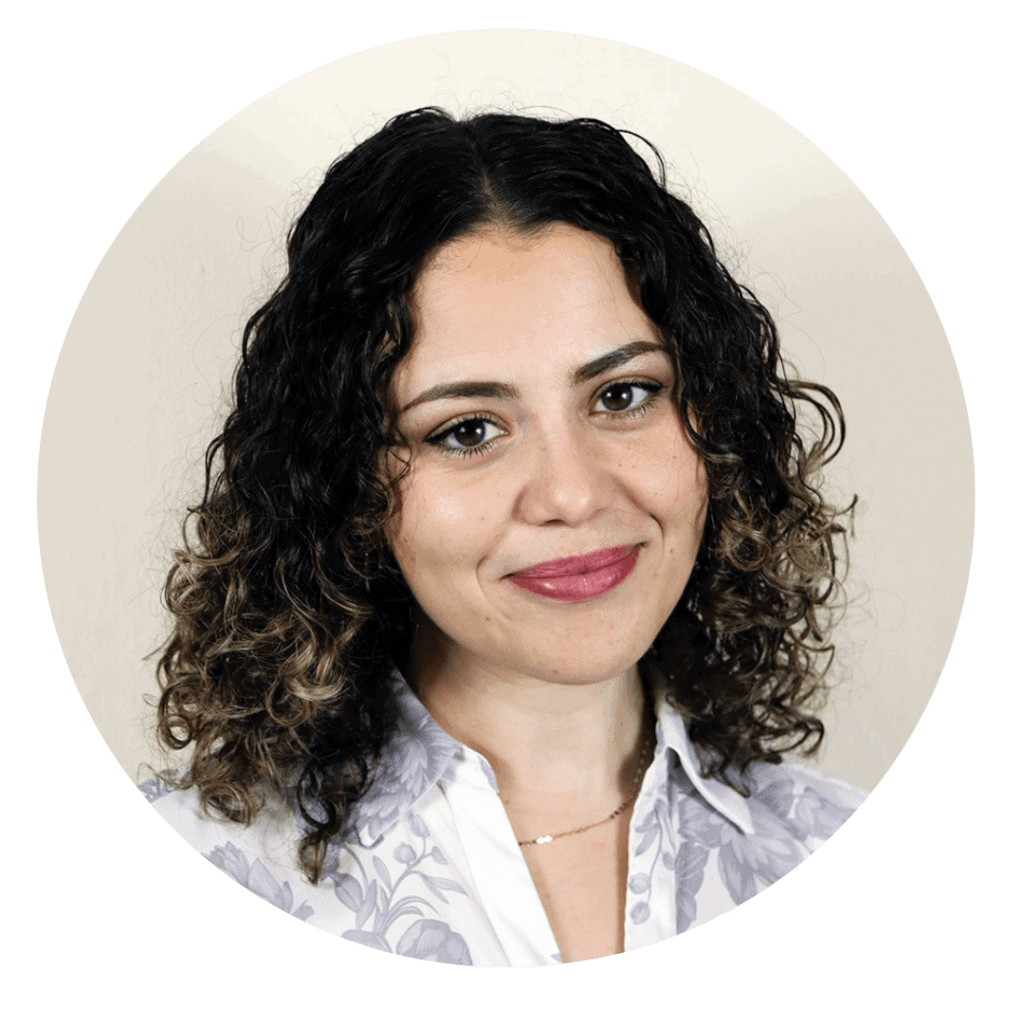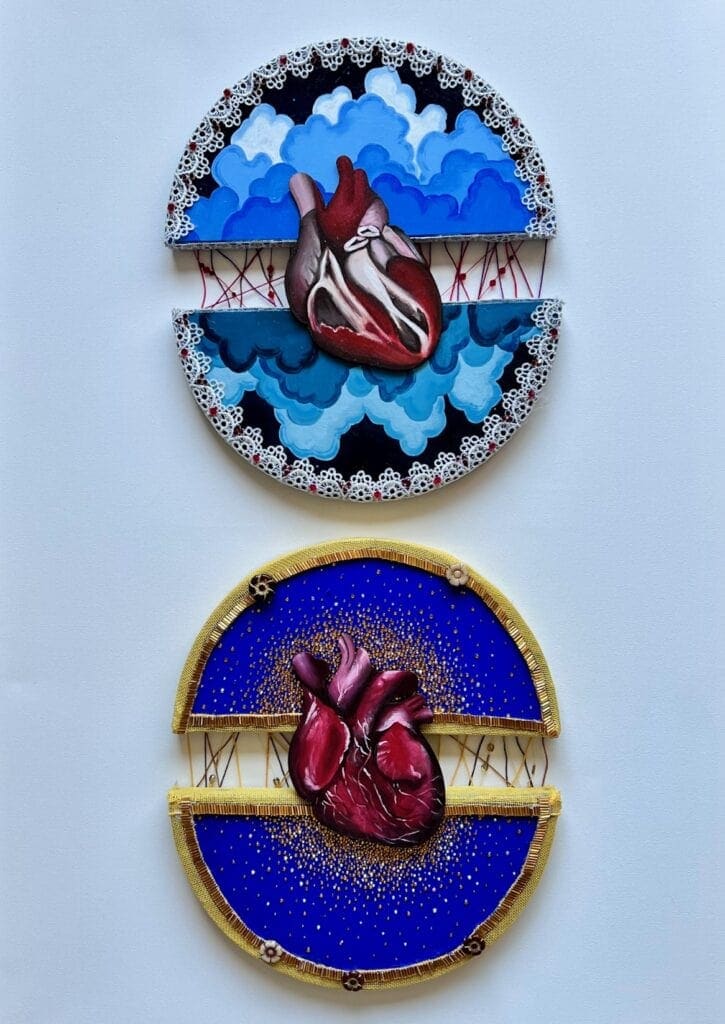
Origin: Venezuelan American
Currently Exhibiting in: New York City
Website: andreaploch.com
Social Media: Instagram
Bio:
Andrea Ploch is a Venezuelan American artist whose work explores the interplay between grief, nostalgia, and healing through the use of color, yarn, and botanical elements. Her practice is rooted in symbolism, drawing inspiration from her environment, evolving inner states, and personal memories. Each piece is an expression of emotional transformation, weaving together tactile materials to convey themes of acceptance and emotional growth.
Guided by influences from Venezuelan artist Gego and Australian artist Niharika Hukku, Ploch’s artistic journey is characterized by thoughtful introspection and exploration of layered meanings. Her work often bridges abstract concepts with personal narratives, creating art that is both deeply personal and universally resonant.
Featured Artwork at Bushwick Gallery
Two Fridas
- Year of Creation: 2024
- Medium: Acrylic on canvas and woodcut, with thread and beading
- Dimensions: 14 x 12 x 1 inches
- Price: $1,200 USD for the set
Description:
Inspired by Frida Kahlo’s iconic 1939 self-portrait The Two Fridas, Ploch’s Two Fridas reflects her own emotional journey in the aftermath of heartbreak. The twin pieces explore the process of self-soothing and emotional healing, depicting the contrast between pain and the desire for renewal. The gaping, vulnerable heart mirrors the raw emotions felt during the initial stages of loss, while the vibrant, hopeful heart symbolizes the possibility of growth and recovery.
Created with acrylic on canvas and woodcut, and accented by thread and intricate beading, the artwork merges tactile techniques with symbolic imagery. The use of thread emphasizes the binding and unbinding of emotions, suggesting a gradual process of stitching oneself back together. The work invites viewers to reflect on their own experiences with love and loss and the resilience that follows.

Exhibition Information
Exhibition Title: Love and Heartbreak: A Duality
Opening Reception: Thursday, February 13 / 6PM-8PM
Exhibition Dates: February 13 – February 20
Theme: This exhibition examines the emotional spectrum of relationships, from joy and intimacy to sorrow and separation. Andrea Ploch’s Two Fridas is a fitting contribution to this theme, representing the dichotomy of heartbreak and healing. Drawing on personal experience and artistic inspiration from Frida Kahlo, the piece bridges vulnerability and strength, symbolizing the journey from grief to acceptance and renewal.
Guided audio experience
For accessibility, the full video transcript is provided below for those who prefer to read or are unable to listen.
“Two hearts. Two selves. Two moments in time, held together by thread. In Two Fridas, Andrea Ploch stitches together the rawness of heartbreak with the quiet resilience of healing, creating a visual meditation on transformation.”
“Inspired by Frida Kahlo’s iconic The Two Fridas, Ploch’s interpretation is deeply personal—yet it speaks to something universal. The heart, rendered in vivid anatomical detail, floats between two halves, suspended by delicate strands of thread. One is exposed, vulnerable, surrounded by deep, stormy blues. The other, golden and luminous, is whole again—but not untouched. Look closely: the seams remain, the history is visible. Healing does not erase the past; it carries it forward.”
“The use of thread is intentional, delicate yet unbreakable. It binds the pieces together, much like memory binds past and present selves, like love lingers even after it has been lost. The beads shimmer—tiny constellations of hope, scattered across the fabric of pain.”
“Ploch’s Venezuelan roots, her fascination with botanical and textile traditions, emerge through every careful stitch and layered hue. There is something ceremonial about this work, as if the act of creating it was an act of repair in itself. To thread, to bind, to mend—this is how pieces come back together after loss.”
“Where do you find yourself in this piece? In the fractured heart or the mended one? Or perhaps in the space between them—the place where pain meets resilience, where love lingers as memory, where healing is always in progress.”